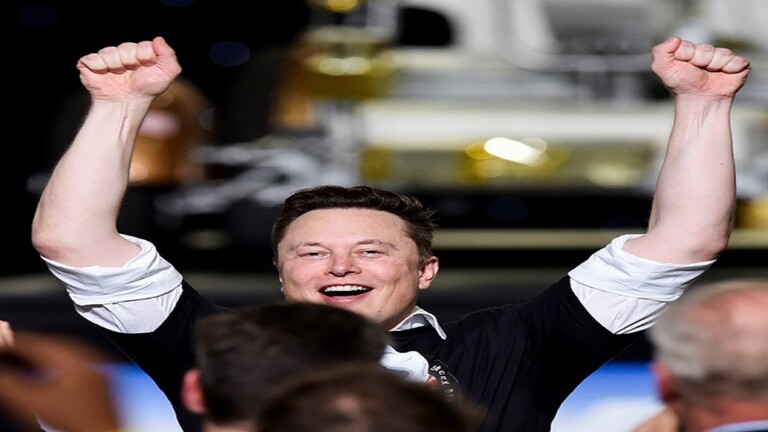Dubai – (Masaader News)
2016 witnessed a decline in Offshore Supply Vessel (OSV) activity in all regions of the world except the Middle East. Stronger results expected in 2017, as oil prices head towards $60 per barrel
The Middle East was the only global market to witness an increase in demand in Offshore Supply Vessel (OSV) activity in 2016 of 2.6%, indicating that regional government investment continues to support the sector’s performance since the fall of oil prices in 2014.
The positive news comes ahead of the region’s biannual Seatrade Offshore Marine and Workboats Middle East (SOMWME) event, which takes place at the Abu Dhabi National Exhibition Centre (ADNEC) on 25 – 27 September 2017.
According to Petrodata figures, demand for OSV in the Middle East region was 2.6% higher in December 2016 than it was in January 2016, an increase from an average of 270 vessels secured on term charters at the start of the year to almost 278 in December.
Emma Howell, Group Marketing Manager, Seatrade, said: “For the Middle East to witness an increase of 2.6%, as the rest of the world remained flat or negative, is very encouraging news for the industry and we expect this to translate into strong business prospects moving forward.”
Other data, published in a Seatrade Maritime News whitepaper entitled ‘The State of the Offshore and Workboat Industry 2017’, confirms that strong signs of recovery exist and pockets of growth will emerge across the offshore industry this year, specifically for workboat operators.
The whitepaper also suggests regional OSV demand will continue to increase over the next 24 months and this will come under the spotlight at SOMWME 2017, during the opening keynote address, entitled ‘The Outlook for Abu Dhabi’, which will be followed by a panel debate on ‘Future Trends and Market Opportunities’.
Howell added: “The performance of the regional OSV sector, suggests that both public and private investment in the oil and gas industry has been a key contributing factor to this positive performance. We are cautiously optimistic that with 2017 widely predicted to bring signs of recovery to global energy markets, we can expect OSV activity to increase supported by recent spending commitments across the GCC.”
Although OPEC has agreed to output cuts this year, in Kuwait, investments of $112 billion over five years will increase capacity to 4 million barrels per day (BPD) by 2020 and in Abu Dhabi capacity will have increased to 3.5 million BPD by 2018, with offshore fields contributing most of the growth.
Oman has followed similar investment patterns with specific focus on its offshore rigs and Saudi Arabia is pursuing plans to bring more oil fields online with two expansions to the existing Khurais operations scheduled for 2018.
Howell added: “We see private sector energy firms increasing efficiency to reduce the breakeven price on a barrel of oil and engaging in corporate restructuring, adoption of best business practices and the standardisation of procurement procedures.”
Predictions from major banks show further optimism with HSBC expecting 2017 to bring the market “back to balance” after a period of oversupply. Although the market will be much more susceptible to interruptions post-2017, a re-dress of the supply demand balance brings the potential for prices to reach over $70 per barrel this year.
Barclays says that global exploration and production spending will rise 9% this year according to data compiled for its E&P Spending Survey.
“We haven’t seen prices in the range of $60 per barrel since the summer of 2015, markets even saw the price per barrel fall to just $29 in January 2016. Now there are certainly some signs of recovery emerging for the oil industry, and this will have a trickle-down effect to offshore activity as well,” said Howell.
Indeed, the SOMWME 2017 programme will host three masterclasses exploring offering options, such as restructuring and cost cutting, consolidation and diversification, all aimed at making the industry more resilient as it prepares for the future.
Elsewhere on the seminar programme discussion will turn to sustainability and alternative fuels with additional key sessions on cyber-security and smart technology.
“Technology has also been utilised to increase efficiency and lower overall costs, with major breakthroughs observed in hybrid propulsion systems, the installation of optimised propellers, nozzles, azimuth thrusters, dynamic positioning systems and the use of electricity on board,” commented Howell.
“Further advances in satellite communications and shipboard communications allow for optimisation of vessel operations, providing further benefits in performance and staff retention,” she added.
Seatrade Offshore Marine & Workboats is the largest workboat and offshore marine event outside of the USA, attracting more than 200 offshore marine and workboat companies.











